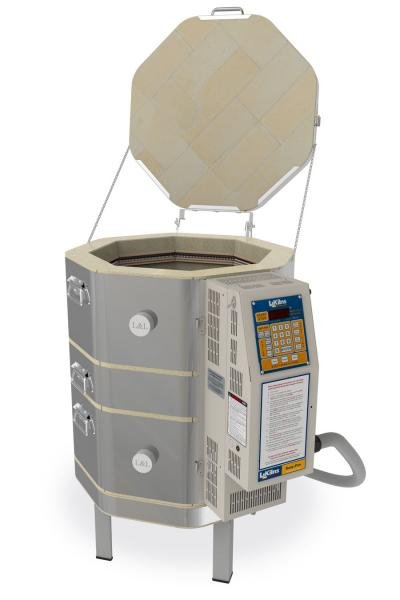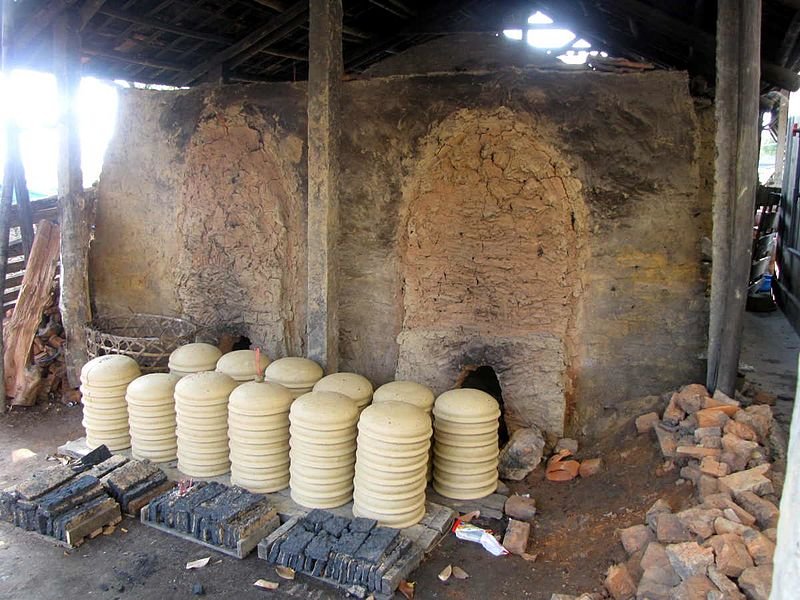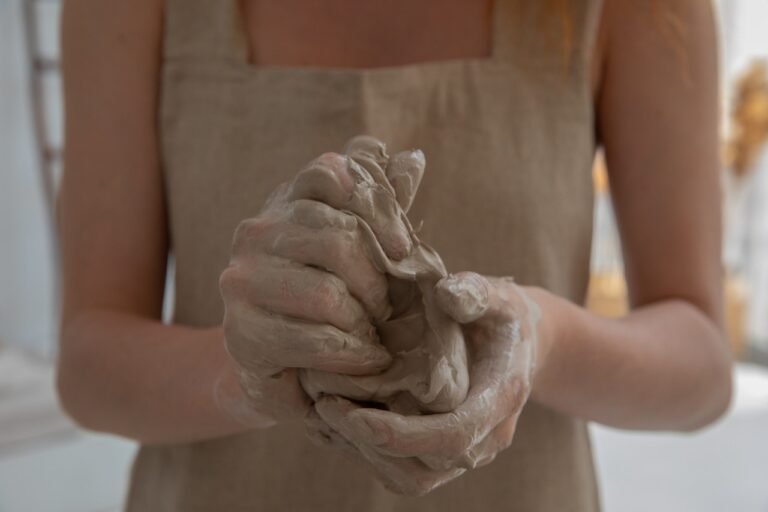How do kilns work? (Explained)
There are many different kinds of kilns and all of them work slightly differently than the other. Although they have a different design, kilns represent chambers that can be heated up to very high temperatures, in order to bake the clay. The purpose of all types of kilns is the same and that is to fire clay, but the way they work is a little bit different. In the following article, we will go deeper into how do kilns really work.
Kilns are specially designed chambers that are using fuel or electricity to reach very high temperatures.
What Are The Uses of Kilns?
Kilns are the place where the beauty of pottery happens. The work process when to turn clay into ceramics and then finally into a finished product. The technology for completing this process is constantly improving and now we have modern ceramic kilns that can help you create a better look and design on your final masterpiece. Firing is a craft and requires a lot of creativity and expertise.
Although the primary use of kilns is pottery and ceramics there are also other things you can use kilns for. It may seem strange to you but some people use kilns for baking, glass blowing, lampworking, to make knives, ceramics (similar with pottery, but different kinds of art), and many other aging materials for different kinds of art projects. Even these seem strange, the high temperatures that are in the kilns are great for this sort of thing.
How Is Pottery Fired In a Kiln?
The design of these kinds of kilns has been changing over the years. Today we have modern kilns but some potters still use the old ones that have a more traditional design.
The process when something is heated in high temperatures in a kiln it is called being “fired”. There are a couple of types of kiln to fire different kinds of materials. For example, there are kilns that are specifically designed for firing ceramics, glass, metal, brick, metal clay, and enamels.
Firing clay turns humble and soft clay into hard-rock pottery and ceramics. Ceramics are a very durable substance and it is similar to stone. It is strong and can survive for thousands of years, and all of this is because you combine clay with fire. In order for this to happen, you need extremely high temperatures provided by the kiln.
Here are a couple of tips for successful firing:
- Before you fire, make sure you are 50cm away from the wall
- Protect your shelves
- Always use cones
- Clean up greenware
- Handle greenware with care
- Fire dry pots
- Wipe your feet
- Bisque fire slowly
What Are 3 Types of Kilns?
There are 3 types of kilns that are most commonly used: electric, gas, and wood.
Electric kilns are the ones that are most used in pottery. This is due to the fact that these modern kilns are fairly easy to use. They have digital panels and have the option to set up your firing schedule. Not all electric kilns have digital panels. For example, Kiln Sitter has a device that controls the temperature and will switch off at a particular one. They are called semi-automatic kilns.
Electric kilns come in different sizes. There are small electric kilns that are specifically made for making jewelry and others that are bigger. Depending on the size they require more or less the same technology in order to work.

Electric Kiln – hotkilns.com 
Gas Kiln – Tomtek.eu 
Wood fired kiln
The second type of kiln is gas kilns. Gas kilns are fuel-burning kilns. They use a gas flame to increase the temperature in the kiln chamber. You can use different types of gas to heat up the chamber. Most common for using is the natural gas from a mains supply. Some use butane or propane, which are known as bottled gases.
Just like the electric kilns the gas kilns also have different sizes. The size can vary from a 2 cubic feet kiln to a huge kiln sized as a whole room. The advantage of using natural gas is the soft flame which means that you can control the direction of the flame. The heat depends on the design of the kiln. The only disadvantage is that gas kilns must have a chimney that will be an exit point of the smoke. Gas kilns are mostly used for creating one-of-a-kind creations.
The third type is the wood-burning kiln. These kinds of kilns are built by hand. They have different shapes and sizes. One design that is common for all wood-burning kilns is the chamber because often is built as a long arch-shaped brick. This must be big enough for you to stand up in it. Just as the gas kilns wood-burning kilns also have a chimney on the back which is built with bricks.
Wood burning kilns are not often used and are most difficult to use, because you can’t control the heat and it is pretty hard to target the right temperature. It requires a lot of attention and to be fed with a lot of wood the whole day. Also, the firing is much longer than with the previous two types.
So depending on what pottery you need choose the right kiln. Have in mind that natural gas produces short and soft flames while wood produces long flames. Although by using wood-burning kilns you can create interesting and unique patterns when the flames collide with the pottery. This can be a key factor for the final product.
How Did Old Kilns Work?
Some of the oldest types of kilns are pit firing and sawdust kilns. They are both made of metal barrels, which is not primitive material. The old kilns work with an original firing technique that dates back to 800AD. Old kilns are still very popular for firing clay, although they are not as efficient as the new ones. The goal is the same and that is to fire clay.
Pit firing works with placing ware in a pit in the ground on top of some combustible materials. After the whole pit is covered you can set the fire and leave it to burn until all combustible materials are consumed by the flame.
The technique in sawdust kiln is similar to pit firing. Just like the pit firing, the ceramic ware that needs to be fired is buried in the combustible materials, which is sawdust. Then the kiln fires until all the sawdust has burned down.
How Hot Is a Kiln?
The temperature on the kiln depends on the pottery you are creating and what are you aiming to achieve. The average kiln can reach temperatures of up to 1100C, but these high temperatures won’t damage the kiln and what is inside of it.
A preliminary firing which is called biscuit firing goes up to 950C. This is used for making safer glazing and to make the clay firm.
Earthenware firing contains iron and other minerals that are used for lower temperature clay that will not tolerate higher temperatures without melting etc., but which allows bright colors, though it remains porous and is fairly easily chipped, goes to about 1000–1100C.
For high-fire stoneware and porcelain which must become non-porous, you need temperatures that go up to 1340C in order for you to achieve the desired product. The higher the temperature the more translucent the porcelain will become.

How Much Do Kilns Cost?
As we said before kilns come in different sizes and shapes, so the price will vary depending on these factors. You have small kilns with a price range from 750 dollars and up to 1200 dollars. On the other hand, you have bigger kilns with a price range from 3500$-4500$, which are well equipped with a lot of features.
Also, the price depends on the electric charge and power consumption. These are just a couple of factors that have an impact on the price. So, before buying we strongly suggest for you to make a quick research and to know what you need the kiln for.







